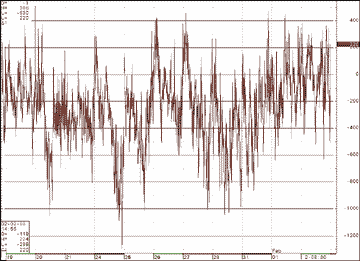How To Use Tick, Tiki, TRIN For Daytrading
by Terry O'Brian
These three indicators can be important guides in implementing trading strategies. Could they help you?
The tick, the tiki, and the trading index (TRIN) -- indicators that are for the most part unknown outside trading circles -- can be important guides in implementing trading strategies. All other indicators are derived from these three; more important, they're easy to use and interpret. Critical to the use and understanding of any indicator, but especially in regard to these three, is the context in which we use them and the questions we want them to answer.
The tick, the tiki, and the TRIN measure what I refer to as the pressure or the flow of trades in and out of the market. The tick and the tiki are essentially indicators made up of subtractions, while the TRIN is essentially a calculator. The tick covers all stocks on the New York Stock Exchange (NYSE), as does the TRIN, while the tiki measures only the Dow 30 stocks. Neither the tick nor the tiki utilize volume in their calculations, but the TRIN does. Finally, each indicator has important and distinct characteristics.

FIGURE 1: TICK. The tick is derived by subtracting the number of stocks heading down from the number of those heading up. It is an excellent intraday guide as to where the market is heading in any given time frame. As a rule of thumb, a tick movement above zero and going up supports a long position; below zero and falling supports a short. Typically, the tick indicator has a range between +600 and -600. The upper, positive range indicates buying pressure; the lower, negative range indicates selling pressure. At its extremes, the tick becomes a contrarian indicator. For example, a +1,000-tick movement, difficult to sustain for any period, is a clue to go short; buying power is running out. Conversely, a -1,000-tick movement may signal a long position and is almost always good for a quick scalp. Most quote services provide the tick on an intraday and end-of-day basis.
Terry O'Brian, who has been trading options and futures for 17 years and teaching trading methods for the last 10, can be reached at tradrteach@aol.com or 716 264-0297.
Excerpted from an article originally published in the April 2000 issue of Technical Analysis of STOCKS & COMMODITIES magazine. All rights reserved. © Copyright 2000, Technical Analysis, Inc.
Return to April 2000 Contents